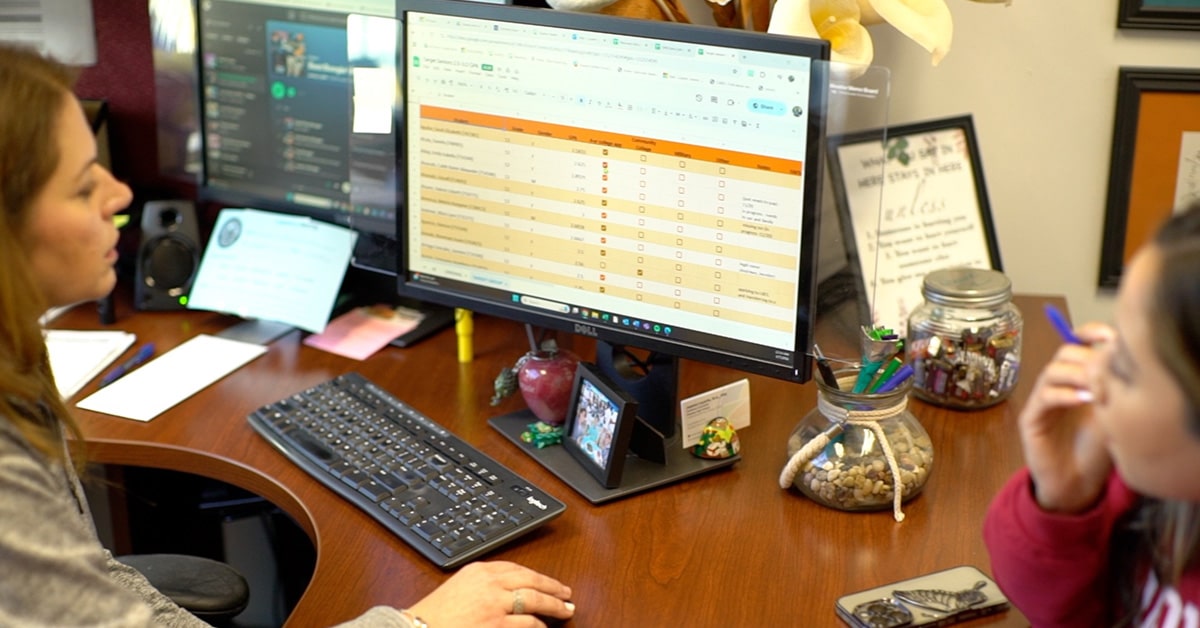


learn more about

learn more about

overview
partner with us
partner with us
events

events



learn more about

learn more about











Some improvers begin by introducing improvement tools—like empathy interviews and driver diagrams. Others, often classroom educators, seek ready-to-implement ideas that drive immediate results. If you start with continuous improvement tools, some educators feel like it lacks immediate impact, whereas if you start with a new activity or idea there is a risk of not developing an understanding of what will provide the results you want to achieve consistently over time. Both are crucial, but a missing middle connects them: data routines.
For this resource and more visit https://ciworkinghub.hthgse.edu/
Narrator: If you are a teacher leader, administrator or work for a school district, you may be interested in bringing continuous improvement to your context. Continuous improvement supports schools and districts to improve outcomes they care about, while also building robust learning communities.
But where do you start? Some improvers begin by introducing improvement tools—like empathy interviews and driver diagrams. Others, often classroom educators, seek ready-to-implement ideas that drive immediate results. If you start with continuous improvement tools, some educators feel like it lacks immediate impact, whereas if you start with a new activity or idea there is a risk of not developing an understanding of what will provide the results you want to achieve consistently over time. Both are crucial, but a missing middle connects them: data routines.
Data routines are simple, problem-focused practices where educators regularly examine and track meaningful data with colleagues over time. These routines power improvement by linking continuous improvement tools with actionable change ideas.
For example, a team trying to improve the number of students applying to a 4 year college may routinely track how many seniors have applied and create strategies to support those who have yet to apply.
Or, educators who want to support more students to earn a passing grade may engage in regular review of their gradebooks and track the number of students with a D or F in order to develop ideas for supporting additional learning opportunities for those students.
The CARE Network’s 8th Grade On-Track initiative launched during COVID, teachers faced the challenge of fostering student belonging in virtual classrooms. Research shows that belonging boosts attendance, perseverance, and success. So, teachers made it their focus to track students’ sense of belonging over time.
Using the PERTs Elevate survey, students provided feedback four times a year. Teachers not only documented the trends but shared results with students, celebrating progress and identifying areas for growth. They even invited students to co-create solutions. Teachers then tested change ideas—from student suggestions and peer experiences—to see what improved belonging, as measured in their ongoing data routine. They also carried these gains from one year to the next. By collecting data over time, they had evidence of their systemic improvement!
Continuous improvement tools also seemed more relevant with this approach. Tools like empathy interviews to understand student experiences and root-cause analysis to uncover deeper issues were now directly supporting team learning. Improvement teams built capacity to use data for improvement while simultaneously testing and refining classroom strategies.
The result? Educators weren’t just implementing ideas in isolation—they were using data routines to learn and sustain improvement over time. Think of the data routine as the center of the Oreo—holding everything together.